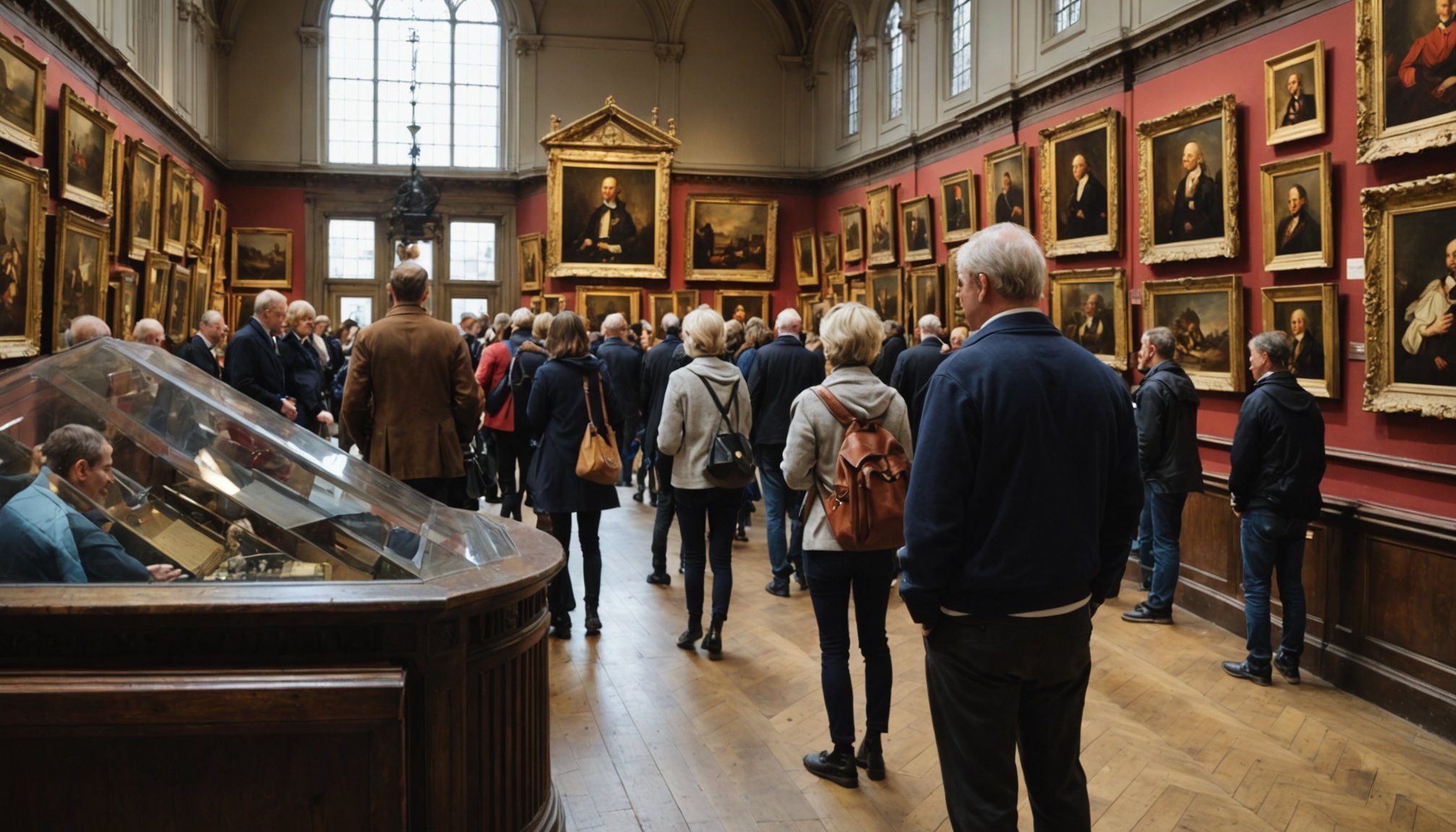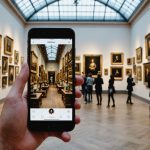Optimize Digital Presence
Optimizing a museum website is crucial in today’s digital marketing landscape. A user-friendly site enhances visitor engagement and helps retain interest. Ensure that the layout is intuitive, the design is appealing, and the navigation is seamless. This involves organizing content in a logical manner, using straightforward language, and ensuring that load times are swift.
Enhancing your website’s visibility often depends on effective SEO strategies. Start by researching relevant keywords related to your museum’s exhibits and events. Incorporate these keywords naturally into your content, meta descriptions, and alt tags for images. Additionally, keep your content fresh and informative, which can improve search engine rankings. Regular updates and engaging stories about exhibits can entice return visits.
Topic to read : Achieving success: effective tactics for uk charities to harness the power of crowdfunding platforms
Leveraging social media is another powerful way to broaden your reach. Creating engaging content that encourages sharing and interactions can drive traffic to your museum website. This approach can also foster a sense of community among followers. Platforms like Facebook, Instagram, and Twitter are great for showcasing events, sharing behind-the-scenes content, and interacting with visitors in real-time.
By integrating these digital marketing strategies, museums can significantly enhance their online presence, reaching wider audiences and fostering a more interactive experience for potential visitors.
Also to discover : Unlocking success in uk retail: key considerations for embracing ar technology – the ultimate guide
Engage with Interactive Technology
Engaging with interactive displays has revolutionised how visitors experience museums and exhibitions. By incorporating augmented reality (AR), institutions can superimpose digital elements into the physical world, providing a richer narrative for artefacts. AR brings history to life, allowing visitors to visualise ancient structures and artefacts in their original grandeur, enhancing their overall experience.
Furthermore, virtual tours have proven instrumental in expanding access to cultural sites. For those unable to visit in person, virtual tours offer a window into exhibitions, allowing individuals worldwide to explore collections remotely. This not only increases the audience reach but also caters to diverse needs, making museum content accessible to everyone at their convenience.
Case studies of UK museums highlight their successful adoption of these technologies. The British Museum, for instance, offers virtual tours with interactive elements that captivate users, providing detailed insights into its expansive collections. Similarly, the Natural History Museum employs augmented reality to enliven exhibits, offering a dynamic and immersive visit. These innovations underline the essential role of interactive technology in modern museology, fostering engagement and accessibility. By leveraging these tools, museums can enhance visitor interaction and broaden their educational impact.
Develop Community-Focused Programs
Community engagement is essential for building lasting relationships and fostering local growth. By actively participating in local partnerships, organizations can create a sense of belonging and mutual support. One approach is collaborating with local artists and organizations, offering creative outlets that resonate with the community’s culture and aspirations.
Outreach programs should be designed with a keen understanding of community interests. Engaging community members in the planning process ensures that programs are relevant and impactful. This can involve focus group discussions, surveys, or town hall meetings to gather diverse perspectives.
To accurately measure the impact of these efforts, soliciting community feedback is crucial. Feedback mechanisms might include regular feedback forms, community meetings, and interactive sessions to discuss the outcomes of various initiatives. Local partnerships can also play a vital role here by offering insights into potential areas of improvement.
In summary, developing community-focused programs involves a deliberate and thoughtful approach that prioritizes active community engagement. By tuning into the needs and voices of locals, engaging with them through meaningful partnerships, and using their feedback constructively, organizations can foster a well-connected and thriving community landscape.
Personalize Visitor Experiences
Enhancing visitor personalization in museums has become a pivotal strategy in creating tailored experiences for every guest. By analysing visitor data, museums can craft customized interactions, ensuring that each visit feels unique and engaging. Consider the impact of audience segmentation—this process divides visitors into specific groups based on preferences and behaviors, enabling museums to deliver content that resonates with distinct audience types.
Incorporating these insights into museum programming leads to more relevant and engaging exhibits. For instance, UK museums have demonstrated success in utilizing personalized communications, ensuring that marketing and exhibition materials cater directly to visitor interests. This can be as simple as sending personalized emails that highlight upcoming exhibitions that align with previous visitor interests or preferences.
Embracing visitor personalization isn’t merely about collecting data; it’s about understanding and responding to these insights in a way that enriches the visitor experience. Museums can implement interactive technologies, such as mobile apps or RFID systems, to further refine and enhance these personalized experiences. By doing so, they not only improve visitor satisfaction but also build lasting connections with their audience. This approach showcases how understanding visitor expectations and customizing experiences accordingly can significantly enhance engagement and retention.
Implement Membership and Loyalty Programs
Membership and loyalty programs can significantly boost brand engagement by nurturing visitor loyalty. To design attractive membership packages, organizations must focus on tailoring membership benefits that meet the diverse needs of their audience. Offering exclusive invitations to events, discounts, and access to special content can make memberships more appealing.
Visitor loyalty is crucial for sustained success and should be rewarded to enhance engagement. Repeat visits can be encouraged through thoughtful rewards programs that incentivize ongoing interaction. Rewards programs could include perks such as points accumulation for discounts, recognition tiers, and personalized experiences based on member preferences. These initiatives not only celebrate loyal visitors but also create a sense of community and belonging.
Evaluating the effectiveness of loyalty programs involves measuring metrics like membership renewal rates, customer retention, and the incremental revenue generated from these programs. Gathering feedback through surveys or direct member interactions can also provide valuable insights into the program’s performance and areas for improvement. By continuously analyzing these elements, organizations can refine their strategies to ensure their membership benefits align closely with visitor expectations, thus fostering long-term loyalty and engagement.
Encourage Visitor Feedback and Participation
Fostering avenues for visitor feedback is crucial to enhancing engagement strategies. By actively encouraging input, institutions can tailor experiences to better serve their audience. One effective method is through surveys and polls, which allow direct communication with visitors about their experiences. Short surveys, available online or at the venue, capture immediate reactions, while polls can focus on specific exhibit elements or overall satisfaction.
To maximise the utility of these tools, it’s important to design questions that are both engaging and easy to understand. Consider starting with broad inquiries before narrowing down, ensuring the collection of comprehensive insights. Analyzing this feedback becomes essential to create a feedback loop; it helps in enhancing future exhibits by identifying strengths and areas for improvement.
The gathered data should be meticulously reviewed, identifying patterns and actionable insights. For example, if survey results repeatedly highlight confusion in exhibit flow, adjustments can be made to signage or display arrangements. Proactive responsiveness not only improves visitor experience but also fosters a sense of community among participants; they feel heard and valued in contributing to the museum or gallery’s evolution. By prioritising visitor engagement through feedback, institutions can thrive and evolve responsively.
Host Special Events and Workshops
Creating memorable special events and workshops can significantly enhance venue attraction. Planning engaging themed nights can draw diverse audiences, catering to various tastes and interests. Themed nights could range from a retro music evening to a cultural cuisine night, capturing different segments of the community. By broadening the scope of themes, the appeal can extend to new visitors who might otherwise not attend.
Workshops provide another engagement layer. Consider hands-on sessions like cooking classes, craft-making, or even tech tutorials. These offerings encourage active participation, creating long-lasting impressions and fostering community. The interactive nature of workshops also prompts attendees to return, eager to learn and do more.
Promotion is pivotal to maximize attendance. Utilize social media platforms and email newsletters to spread the word. Collaborating with local influencers or offering early-bird discounts can also elevate interest. Partnerships with local businesses for co-hosted events may attract their customer base, thereby broadening your audience reach.
Overall, the combination of creatively themed nights and engaging workshops not only attracts diverse audiences but also cements the venue as a vibrant community hub.
Create Engaging Educational Content
Creating captivating educational content is essential in enhancing audience engagement and fostering learning. Offering curator-led talks can significantly enrich the visitor’s experience, providing deeper insights and sparking curiosity. These talks can delve into aspects of exhibitions or collections, offering unique perspectives that are often not apparent at a first glance.
Educational programs are another vital component, particularly for schools. Such programs can be tailored to complement educational curricula, helping students broaden their understanding in an interactive setting. This approach not only aids in knowledge retention but also makes learning enjoyable.
Leveraging online platforms extends this educational reach, providing informational resources to a broader audience. Virtual tours, webinars, and interactive sessions allow people to access these resources from anywhere, blending convenience with learning. Utilizing digital tools enriches the educational experience by incorporating videos, quizzes, and interactive content to appeal to tech-savvy audiences.
In summary, developing a diverse range of educational content can meet the varied needs of different audiences. By focusing on accessible and stimulating resources, institutions can ensure they cater to learners of all ages, encouraging a lifelong passion for discovery and learning.
Collaborate with Influencers and Bloggers
Engaging with influencer partnerships can serve as a powerful tool for museums seeking to enhance their visibility. Identifying the right museum influencers is the first step in this process. Consider factors such as their follower demographics, interest alignment, and engagement levels. By choosing influencers who share a passion for art and culture, museums can effectively amplify their outreach efforts.
In today’s digital age, leveraging social proof through influencer marketing is crucial. When influencers share personal experiences and stories about their visits, it resonates more with audiences than traditional advertising. Followers are more likely to visit a museum if an influencer they trust advocates for it.
Consider past instances where influencer campaigns have flourished. For example, several UK museums have successfully increased footfall by collaborating with influencers on social media. These partnerships often involve exclusive tours, behind-the-scenes content, or the inclusion of influencers in special events, which helps in creating buzz and excitement.
To maximize the impact, museums should maintain an ongoing relationship with influencers. This sustained cooperation ensures continuous engagement and boosts the museum’s presence in the influencer’s content stream, continually attracting new and diverse audiences.
Monitor and Analyze Visitor Engagement
Understanding visitor engagement is essential for evaluating the performance of a website. Key metrics such as bounce rate, average session duration, and pages per session offer insight into how visitors interact with web content. These metrics provide a quantitative basis for assessing engagement levels and identifying areas for improvement.
To gain deeper insights, utilizing analytics tools like Google Analytics or Adobe Analytics is indispensable. These tools consolidate data, presenting it in a comprehensive format that highlights trends and patterns. They enable site owners to monitor real-time visitor activity, track any changes in user behavior, and assess the impact of modifications made to the platform.
Adjusting strategies based on data analysis is crucial for optimizing visitor engagement. Best practices include setting clear goals for each metric and conducting regular reviews to ensure alignment with business objectives. Additionally, segmenting the audience into different categories based on behavior can help tailor content to meet distinct user needs, enhancing overall engagement.
In conclusion, an analytical approach to visitor metrics ensures that every tweak made is backed by data-driven evidence. This method not only quantifies success but also supports continuous improvement, maintaining the website’s relevance and effectiveness in an ever-evolving digital landscape.











